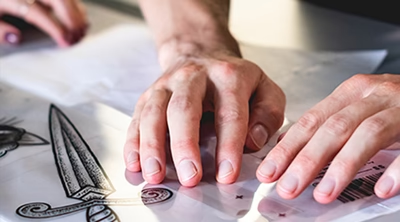What is the Difference Between Heat Transfer and Screen Printing?
When it comes to customizing apparel and other products, two popular printing methods often come into play: heat transfer and screen printing. Both techniques have their unique advantages and are suited for different applications. Understanding the differences between them can help you make informed decisions for your printing needs. In this blog post, we'll delve into the specifics of each method, comparing their processes, benefits, and ideal uses.
Understanding Heat Transfer Printing
What is Heat Transfer Printing?
Heat transfer printing involves transferring a design from a specially formulated paper onto a substrate (such as fabric) using heat and pressure. The design is first printed onto transfer paper using inkjet or laser printers and then pressed onto the material with a heat press machine.
How Does It Work?
- Design Creation: The desired image or text is designed using graphic design software.
- Printing onto Transfer Paper: The design is printed in reverse onto heat transfer paper using appropriate inks.
- Heat Press Application: The transfer paper is placed onto the substrate, and a heat press machine applies heat and pressure, causing the ink to transfer and adhere to the material.
- Final Product: The paper is peeled away, leaving the design embedded onto the substrate.
Advantages of Heat Transfer Printing
- Versatility: Suitable for a wide range of materials, including cotton, polyester, and blends.
- High-Quality Images: Capable of producing detailed and colorful images, including photographs.
- Cost-Effective for Small Batches: Ideal for small orders or one-off designs as setup costs are minimal.
- Ease of Use: The process is relatively straightforward and doesn't require extensive equipment or expertise.
Disadvantages of Heat Transfer Printing
- Durability Concerns: Designs may fade or crack over time, especially after repeated washing.
- Texture and Feel: The printed area can feel slightly stiff or plastic-like compared to the rest of the fabric.
- Not Ideal for Dark Fabrics: Standard heat transfer can struggle to produce vibrant results on dark materials without specialized papers.
Understanding Screen Printing
What is Screen Printing?
Screen Printing, also known as silkscreen printing, is a traditional method where ink is pressed through a mesh screen onto a substrate. Each color in the design requires a separate screen, making it more suitable for designs with fewer colors.
How Does It Work?
- Design Separation: The design is separated into individual colors, and each color is transferred onto its own screen.
- Screen Preparation: Screens are coated with a light-sensitive emulsion and then exposed to light through the design stencil, hardening the emulsion except where the design is, creating openings for ink to pass through.
- Printing Process: Ink is applied to the screen and pressed through onto the material using a squeegee.
- Curing: The printed material is passed through a dryer to cure the ink, ensuring durability.
- Final Product: The result is a vibrant and long-lasting print embedded into the material.
Advantages of Screen Printing
- Durability: Produces long-lasting and washable designs that withstand wear and tear.
- Vibrant Colors: Delivers bold and opaque colors, especially on dark fabrics.
- Cost-Effective for Large Orders: Economical for bulk printing as the cost per unit decreases with volume.
- Versatility in Ink Types: Allows the use of various inks, including metallic and glow-in-the-dark options.
Disadvantages of Screen Printing
- Not Ideal for Detailed Images: Less suited for complex, multi-colored, or photographic designs due to the separate screen requirement for each color.
- Higher Setup Costs: Initial setup is more time-consuming and expensive, making it less economical for small orders.
- Environmental Concerns: Involves the use of chemicals and produces waste that requires proper handling and disposal.
Which Method Should You Choose?
The choice between heat transfer and screen printing depends on several factors:
- Order Size: For small batches or single items, heat transfer is more economical. For large quantities, screen printing offers better cost efficiency.
- Design Complexity: If your design includes intricate details or multiple colors, heat transfer is preferable. For simple, bold designs, screen printing works best.
- Material Type: Consider the substrate you'll be printing on. Both methods work well on fabrics, but screen printing offers more versatility across different materials.
- Desired Durability: For products that will undergo heavy use and frequent washing, screen printing provides greater longevity.
- Budget and Time Constraints: Heat transfer allows for quicker turnaround times and lower upfront costs, making it suitable for projects with tight deadlines and budgets.
Conclusion
Both heat transfer and screen printing have their distinct places in the world of custom printing. Understanding their differences helps in selecting the right method that aligns with your project's requirements, budget, and desired outcome. Whether you prioritize detail and versatility or durability and cost-effectiveness, choosing the appropriate printing technique ensures that your custom designs look great and stand the test of time.
Need assistance with your next printing project? Reach out to professionals who can guide you through the process and help bring your designs to life with the perfect printing method.

.webp)


Comments
Post a Comment